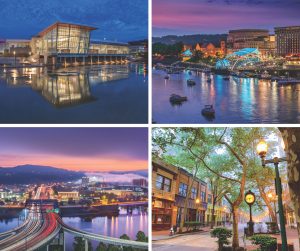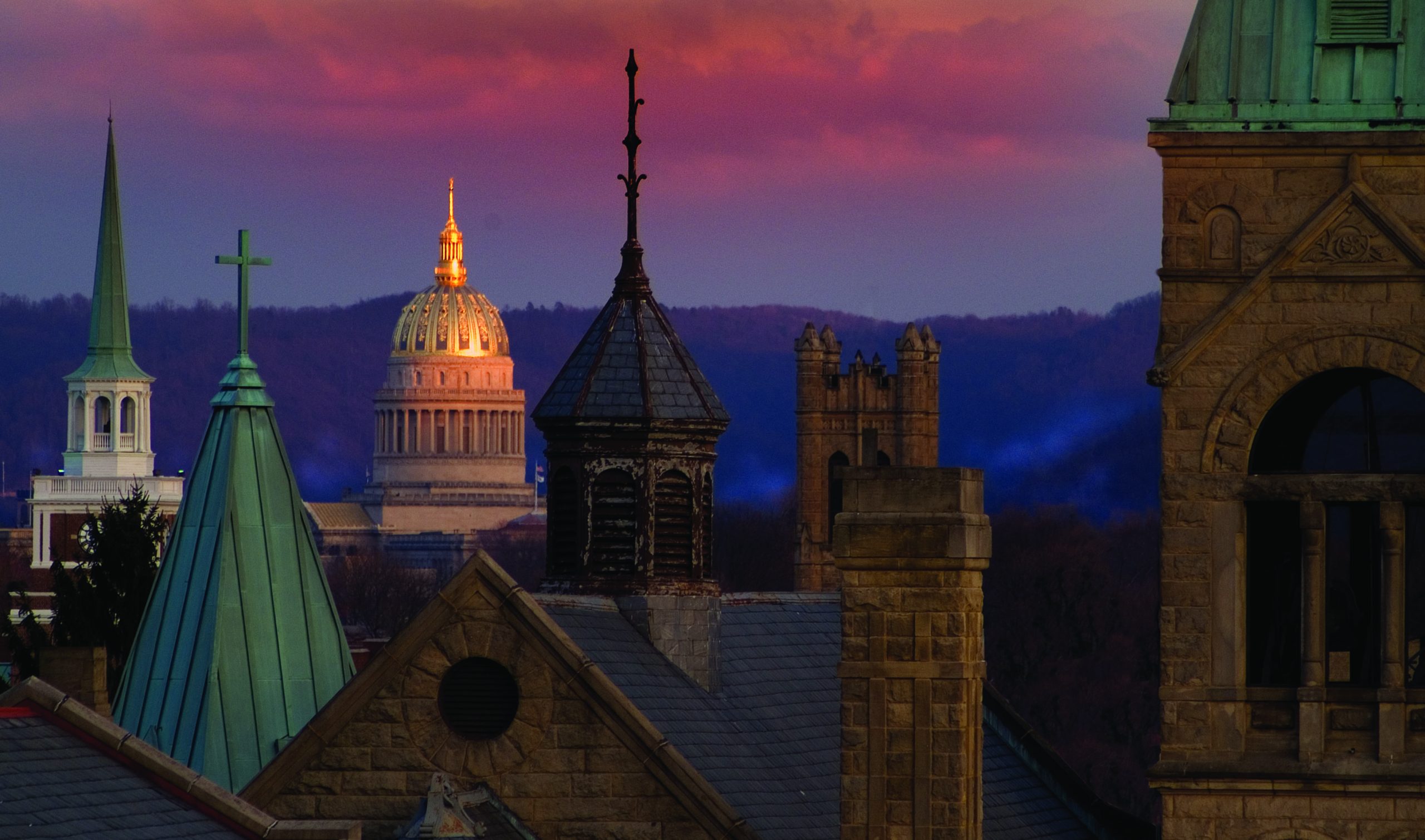Located at the confluence of the Elk and Kanawha rivers, Charleston is far more than just the seat of West Virginia’s government. With its natural beauty, bustling arts scene and numerous recreational opportunities, West Virginia’s capital city has much to offer for both business and pleasure.

Chartered as a town by the Virginia General Assembly in 1794 on land belonging to Col. George Clendenin, Charleston was originally named Charles Town, for Clendenin’s father, before the name was shortened around 1819. Frontiersman Daniel Boone was among its early residents.
After West Virginia achieved statehood in 1863, the state capital moved back and forth between Wheeling and Charleston for years. A popular vote in 1877 settled the matter, and Charleston was officially designated the capital in 1885. After the downtown Victorian Capitol building burned down in 1921 and its temporary replacement was destroyed by fire in 1927, state leaders engaged architect Cass Gilbert to design a new Capitol building. Dedicated in 1932, it features decadent interior details, including marble walls and massive crystal chandeliers. The Capitol’s centerpiece is its stunning dome, gilded in 23.5-karat gold leaf and nearly 5 feet taller than the dome of the U.S. Capitol. It serves as a beacon for visitors from across West Virginia and beyond.
Throughout its history, Charleston has been an important location for the chemical, coal, natural gas, banking and manufacturing industries. The local salt industry helped build Charleston’s early economy, with the first salt furnace opening in 1797. Other industries grew to support the salt business, including flatboat construction and barrel making. The city’s first natural gas well opened in 1815, and coal was used as fuel for the saltworks after it was discovered in Charleston in 1817. Charleston’s growth continued with the arrival of the first steamboat in 1820 and the completion of the Chesapeake & Ohio and Kanawha & Ohio railways. In 1862, Confederate forces occupied Charleston for two months, destroying most of the saltworks as they departed.
The onset of World War I brought a demand for chemical products, and by the end of World War II Charleston was an industrial powerhouse, with companies like Union Carbide and DuPont leading the way. Though that legacy endures, Charleston’s economy has since diversified, with strong sectors in health care, retail and public administration. In recent years, Charleston has also experienced significant growth in technology and tourism.
Charleston provides a highly accessible location for commerce and leisure. Completed in the 1970s, three interstates – 64, 77 and 79 – intersect in the city. Kanawha Airport opened in 1947 and was renamed in 1985 to honor West Virginia native Gen. Charles “Chuck” Yeager, the first pilot to break the sound barrier. Now known as West Virginia International Yeager Airport (CRW), it serves as a crucial transportation center for the entire region.
Charleston is full of the history you would expect from a capital city, while its growing arts scene and riverfront location also make it a hub for culture and recreation. Located on the grounds of the Capitol Complex, the West Virginia State Museum allows visitors to walk through a “show path” of the state’s cultural, industrial and natural history, from prehistoric times to the present day. The Clay Center for the Arts & Sciences of West Virginia is one of only a few places in the country to house the sciences, visual arts and performing arts all under one roof. The Clay Center also hosts performances by the West Virginia Symphony and Charleston Ballet. For larger-scale events, the Charleston Coliseum & Convention Center offers a dynamic venue for concerts, sporting events and corporate meetings.
Festivals and arts-related events dot the Charleston landscape all year long, from free concerts at Haddad Riverfront Park to the Charleston Sternwheel Regatta, a summer festival drawing in big names to celebrate Independence Day. The city is also home to the Charleston Dirty Birds, a member of the South Division of the Atlantic League of Professional Baseball, a Professional Partner League of Major League Baseball, who play each spring and summer at GoMart Ballpark.
Many world-class outdoor recreation opportunities are within a short drive of downtown, including Kanawha State Forest and Coonskin Park. Along the Kanawha River, directly across from the Capitol, sits the University of Charleston – an independent, co-educational institution founded in 1888.
Downtown Charleston offers a number of unique retail and dining options. Capitol Market, an indoor-outdoor market located in a turn-of-the-century train station, offers farm-fresh produce and specialty shops showcasing West Virginia-made goods. It was recently added to the National Registry of Historic Places. Nearby Capitol Street is home to an array of one-of-a-kind restaurants serving up a wide range of culinary delights. West Virginia’s first James Beard Award winner, Chef Paul Smith, has multiple restaurants in the city.
In 2024, Optimos Travel named Charleston the second most affordable vacation destination in the U.S.
Angela Henderson Bentley is a freelance writer living in South Shore, Kentucky.
